FFDDP Participants
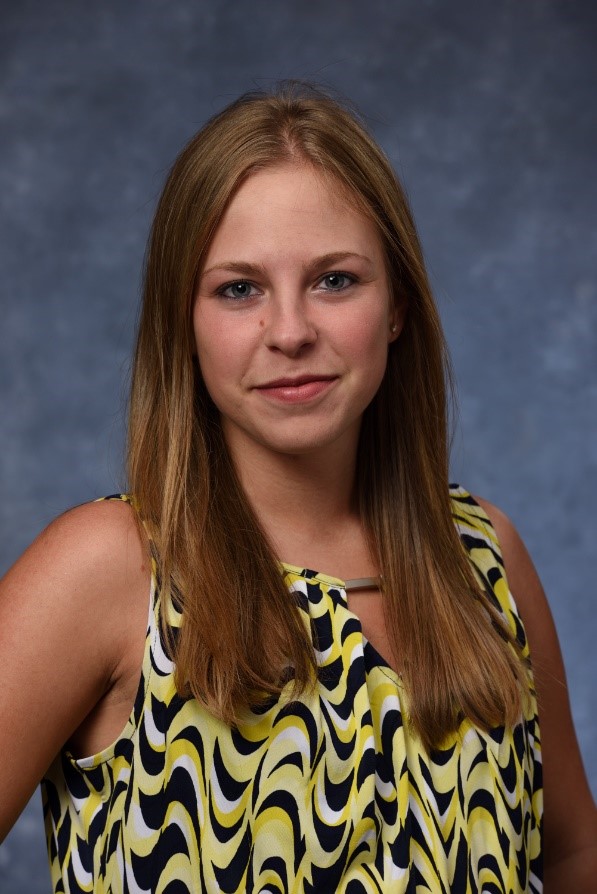
Lisa Stabryla
Bio: Lisa Stabryla is a mid-career PhD student, a 2017 National Defense Science and Engineering Graduate (NDSEG) fellow, and an aspiring faculty member. In the Civil and Environmental Engineering Department at the University of Pittsburgh, she is pursuing research questions related to the sustainable design of nanomaterials for combating antimicrobial resistance.
Abstract: Antimicrobial agents are ubiquitous in many industries, including health care, food and agriculture, water treatment, and drinking water distribution. A major challenge associated with antimicrobial use is that the target microbe can build up resistance, decreasing the antimicrobial’s efficacy over time. Silver nanoparticles (AgNPs) and other ionizing engineered nanomaterials (ENMs) are being proposed as candidates in the development of new antimicrobial agents due to their high efficacy, multiple modes of bacterial inactivation, and access to particle parameters that can be manipulated to influence the magnitude and mechanisms of antimicrobial activity. The ability to exploit the ENM’s enhanced functionality requires elucidating the bacterial inactivation pathway(s) of the ENM, particularly the link between material properties and the desired biological endpoint. The mechanisms of AgNP antimicrobial activity have been widely studied, and largely attributed to the release of silver ions (Ag(I)). However, it has also been established that Ag(I) ion exposure alone does not elicit the same response profile as many AgNPs, suggesting that the added antimicrobial activity is induced through nanomaterial properties, namely size, shape, and surface chemistry. This poster will present results from a systematic review of the AgNP antimicrobial activity literature, providing supporting evidence for (i) particle-specific effects that act independent of dissolution, and (ii) the critical role of the particle in ion-driven mechanisms and overall efficacy of AgNPs. We will also present the proposed next phase of our project, which includes using well-defined and well-controlled material and biological systems to comprehensively study microbial inactivation and genetic adaptive resistance pathways as a function of tunable particle parameters. Exploring how microbial ENM stress response leads to inactivation and adaptive resistance as well as the evolution of these mechanisms with changes in ENM physicochemical properties will allow us to develop nano-enabled antimicrobial agents in a way that delays, or ideally evades, resistance.

RACHEL J. SMITH
Bio: I am a 5th year PhD candidate in Biomedical Engineering, working in Beth Lopour’s lab of Computational and Translational Neuroscience at the University of California, Irvine. My work is focused in EEG signals processing to study a form of pediatric epilepsy called infantile spasms.
Abstract: Infantile spasms syndrome is an epileptic encephalopathy in which prompt diagnosis and treatment initiation are critical to therapeutic response. Diagnosis of the disease heavily depends on the identification of characteristic electroencephalographic (EEG) patterns, including hypsarrhythmia. However, visual assessment of the presence and characteristics of hypsarrhythmia is challenging because multiple variants of the pattern exist, leading to poor inter-rater reliability. We investigated whether a quantitative measurement of the control of neural synchrony in the EEGs of infantile spasms patients could be used to reliably distinguish pre-treatment EEG and indicate successful treatment outcomes. We used autocorrelation and Detrended Fluctuation Analysis (DFA) to measure the strength of long-range temporal correlations in 21 infantile spasms patients before and after treatment and 21 control subjects. The strength of long-range temporal correlations was significantly lower in pre-treatment EEG than control patients, indicating decreased control of neural synchrony. There was no difference between post-treatment EEG without hypsarrhythmia and control patients. Further, the presence of hypsarrhythmia could be classified based on the DFA exponent and intercept with 92% accuracy using a support vector machine. Successful treatment was marked by a larger increase in the DFA exponent compared to those in which spasms persisted. These results suggest that the strength of long-range temporal correlations is a marker of pathological cortical activity that correlates with treatment response. Combined with current clinical measures, this quantitative tool has the potential to aid objective diagnosis and assessment of treatment efficacy to inform clinical decision-making.
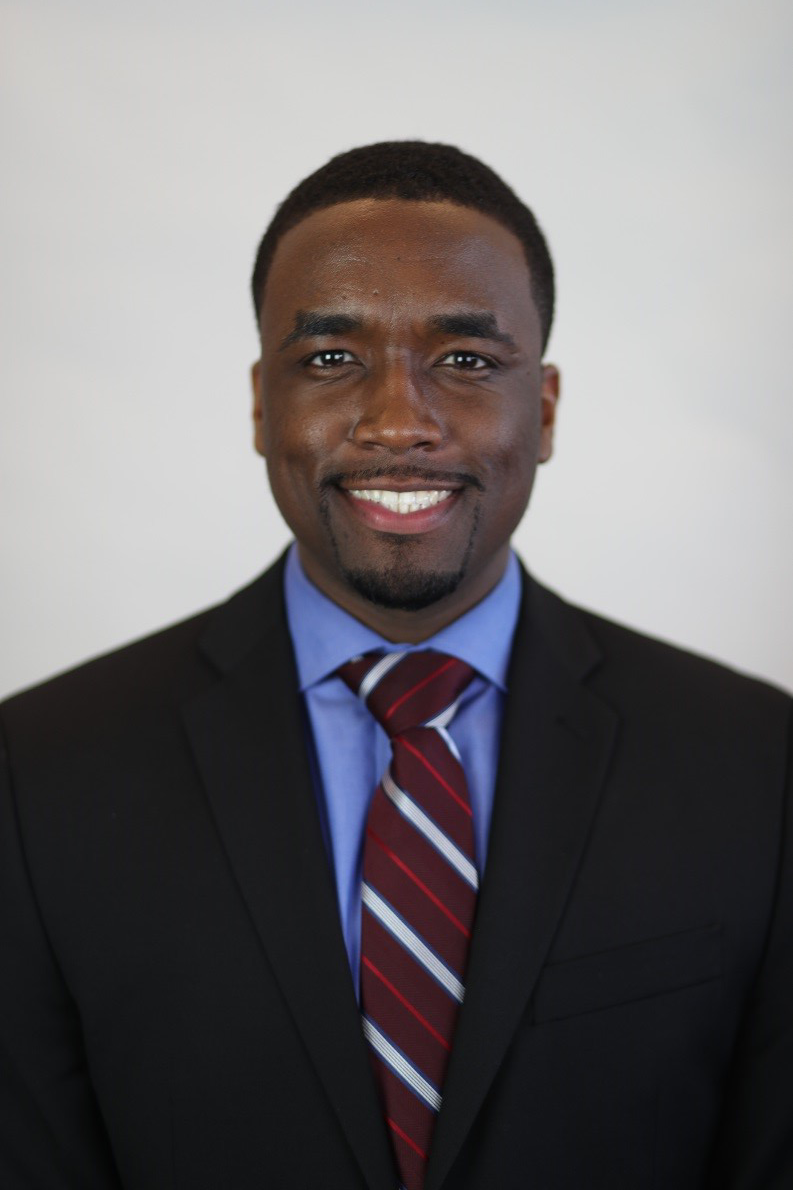
HERVENS JEANNIS
Bio: An NSF IGERT Fellow, who has experience developing, conducting, and analyzing survey data (i.e. quantitative and qualitative). Primarily, helping departments, organizations and institutions implement systems and solutions to become more effective and efficient. Additionally, helping underrepresented groups become better represented in science and engineering fields.
Abstract: There is a dearth of literature in disability and engineering research on the interaction between students with physical disabilities (SwD-P) and their experiences in the post-secondary science and engineering (S&E) laboratory setting. This research provides empirical evidence on learning barriers and facilitators in instructional science and engineering laboratory settings from a national survey on students with physical disabilities (SwD-P). A nationwide self-report survey, the Full Participation Science and Engineering Accessibility (FPSEA), was disseminated online via Qualtrics. Approximately 1,200 organizations and universities across the United States were contacted through purposive sampling. Empirical evidence on barriers and facilitators in instructional S&E laboratory settings are presented primarily using descriptive statistics. Survey findings reveal that students experience a wide range of limitations to fully participating in the laboratory, from entering the laboratory to being given passive roles. The survey also reveal a range of supports such as elevators, ramps, accessible course materials, and peers have served as facilitators. Participants cited barriers such as inappropriate accommodations and instructors’ negative viewpoints, as well as gaining access to facilities even after the enactment of the Americans with Disabilities Act (ADA). These findings suggest that while ADA has lessened some barriers to SwD-P, barriers remain in using the laboratory space. The FPSEA survey fills the gap in finding barriers and facilitators to using S&E laboratories from the SwD-P’s perspective. The results of this survey build on existing literature and can help inform researchers and laboratory instructors on issues surrounding the use of science and engineering laboratories.
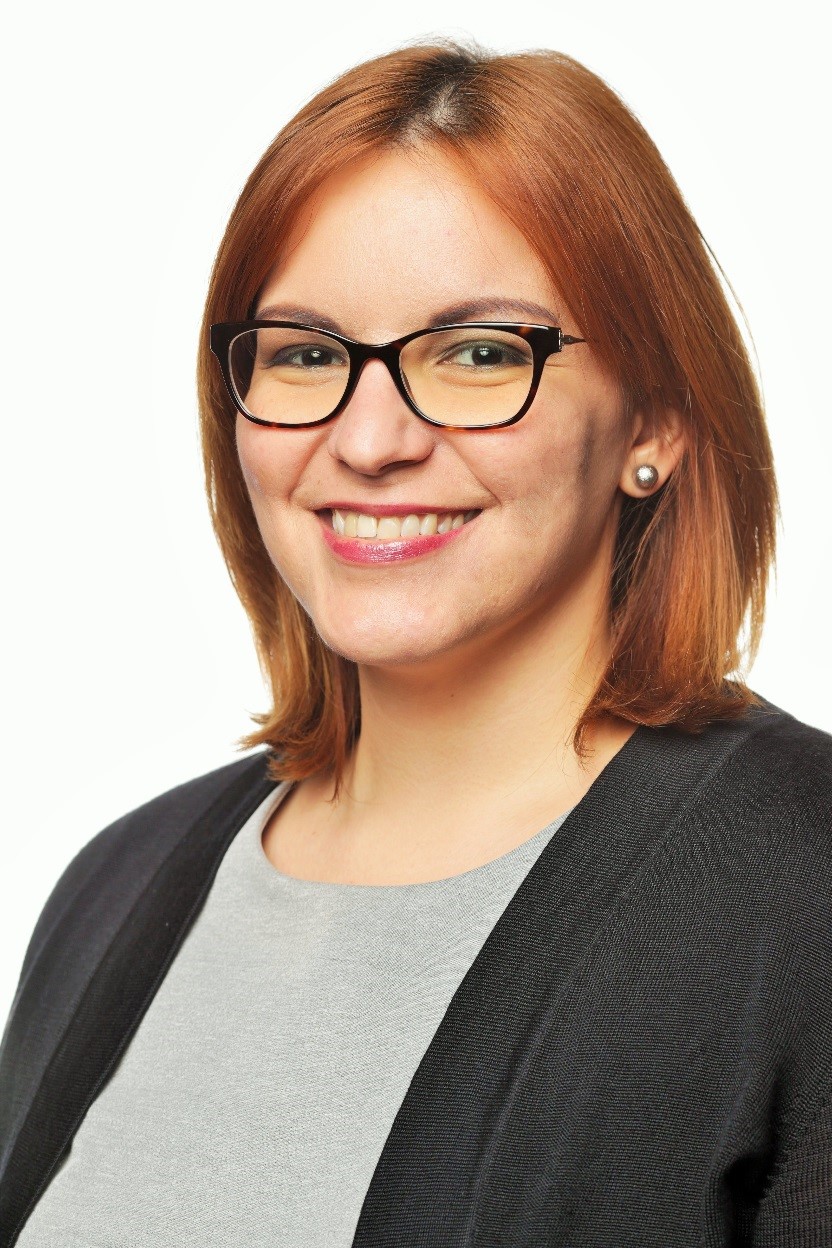
MICHELLE A. VISBAL ONUFRAK
Bio: Michelle A. Visbal Onufrak has bachelor’s and master’s degrees in Electrical Engineering from the University of Puerto Rico-Mayaguez. Since 2013, she has been pursuing her Ph.D. in Biomedical Engineering at Purdue University. She recently completed a clinical study in Kenya, to develop a smartphone application for non-invasive anemia detection.
Abstract: Anemia is a major public health problem in developing countries. In Africa, anemia prevalence is extremely high, affecting two-thirds of preschool-age children and a half of women. Early and accurate anemia diagnosis is imperative to provide prompt treatment and reduce costs of treating anemia-related health complications, especially in settings with limited access to laboratory-based hemoglobin (Hgb) tests. Conventional non-invasive, field-based approaches using color-matching assessment of the palpebral conjunctiva (i.e. inner eyelid), nailbed, tongue or palm are not comparable to clinical-grade laboratory Hgb tests. Hyperspectral imaging is widely used in medicine to obtain precise optical information of light absorbers in biological tissues, such as Hgb, in a label-free manner. However, acquiring and processing hyperspectral image data usually requires advanced instrumentation such as spectrometers, spectrographs or tunable color filters, which cannot be easily adapted for field-based applications. We are developing a virtual hyperspectral imaging (VHI) smartphone application that can accurately and precisely determine Hgb count in subjects at risk for anemia. By using an RGB image of the inner eyelid, which serves as a non-invasive measuring site, our proposed method does not require a patient’s blood sample, nor additional hardware. To achieve this, we use VHI to reconstruct the full reflectance spectra from the RGB image data of the patient’s inner eyelid. We recently completed the first phase of our clinical study, where we collected hyperspectral and RGB data of the inner eyelid from 103 subjects referred for Complete Blood Count (CBC) test at the AMPATH Reference Laboratory in Eldoret, Kenya. This data set provides a platform to finalize our hemoglobin estimation algorithm, which will be implemented into a user-friendly mobile application and serve as a risk-stratification tool for anemia assessment in communities with limited access to standard laboratory blood tests.
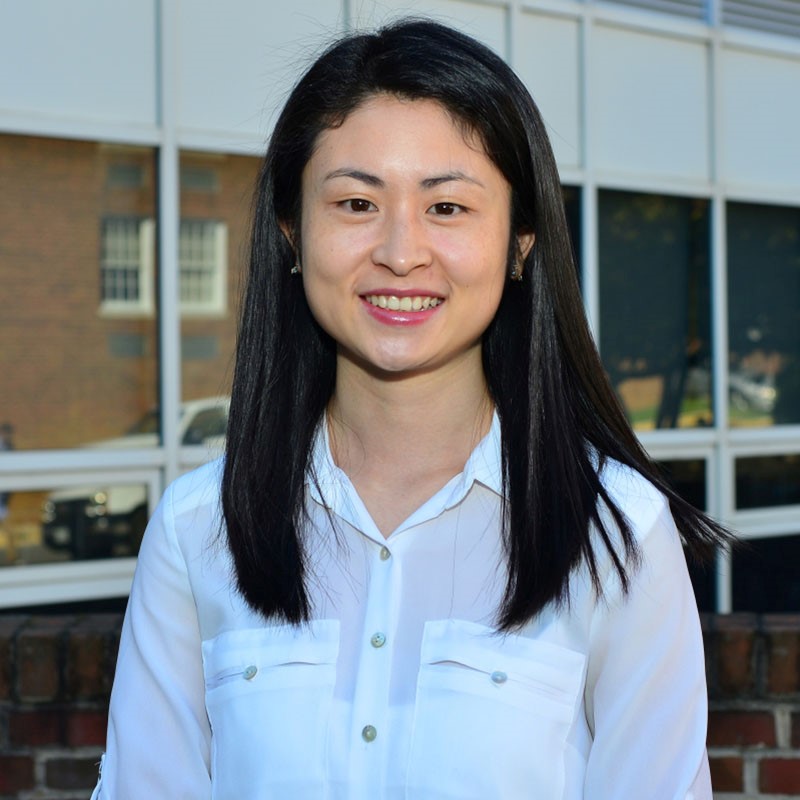
LU LIU
Bio: I’m Lu Liu, currently a postdoctoral research associate at Rice University. I obtained BS and MS degree from University of Oklahoma, and PhD degree in Water Resources Engineering from University of Maryland. My research areas generally include water-energy nexus, impacts of climate change on water, and sustainable water resource management.
Abstract: Water and wastewater infrastructure in the U.S. face unprecedented challenges that require unconventional solutions towards more sustainable management. Here in this study, we presented a modeling framework to assess the impact of water system decentralization through direct potable reuse (DPR) for the City of Houston, TX, and analyzed the environmental and economic implications of different DPR configurations. Results show that DPR can reduce the City’s dependency on conventional water by up to 28%. Decentralized DPR will likely improve water quality by reducing water residence time in pipes. Net energy saving is plausible under certain conditions. Financial cost increases with larger scale DPR implementation, however, unit operational cost remains comparable with other water non-conventional augmenting solutions. Modeling framework developed in this study can be applied to any other water network to quantify impacts of decentralized water supply and identify reuse strategies for meeting different criteria tailored towards enhancing efficiency and sustainability.

DR. H. BRYAN RILEY
Bio: Dr. H. Bryan Riley, who joined Ohio University in 2010, has taught both undergraduate and graduate EECS. Performed state of the art research in signal processing, autonomous vehicle controls, sensor fusion, and machine learning projects. Led the students to high honors at noteworthy science fairs. The work enabled the financial and research support of graduate students to successfully complete advanced degrees through externally funded research. During his industrial background he has managed multi-disciplined and global engineering teams responsible for introducing advanced electronic features for passenger vehicles such as enhancements to vehicle stability control (VSC), adaptive cruise control (ACC), and other active safety features that warn drivers of potentially hazardous driving conditions. He holds three patents and was responsible for the autonomous brake controls and roadworthy engineering prototype vehicles with integrated safety technologies. He currently is the founder and managing director of Provectus Technical Solutions, LLC, (www.provectus-ts.com) an engineering services company, established in May 2009.
Abstract: Passenger vehicles are increasingly incorporating intelligence into electro-mechanical subsystems for the purpose of mitigating human operator errors that lead to automobile crashes, property damages, and human injuries. This research proposes to investigate control accuracy in the determination of positioning the self-driving vehicle relative to lane markers and road boundaries during travel in inclement weather conditions which continues to be of paramount importance. This paper presents an investigation and associated results where road land boundary markers are detected in conjunction with the ability to decipher the horizon when the front view of the vehicle’s path is degraded. Degradation of driving scenes can be attributed to such weather conditions as heavy rain, fog, snow or dust storms. The detection of lane markers and road boundaries is especially important for roads that exhibit severe curves, aggressive uphill slopes and downhill valleys, respectively. Here, we present a model to predict deviations from reference distances associated with roads with such design constraints. To address self-driving objectives, a method is proposed based on the Least Mean Square (LMS) optimization and the orthogonality principle. Designers and manufacturers of current and future systems will rely on sophisticated sensor sets (i.e., low-cost 24GHz RADARs, 360o cameras, navigation-grade ultrasonic sensors, and others) to provide sufficient signals for data fusion algorithms such that federal safety-critical standards are validated. Consideration of emerging technologies such as vehicle-to-vehicle communications (V2V) and vehicle-to-infrastructure (V2I) will support the driverless technologies and consumer acceptance becomes a reality. The paper also presents a design methodology of the concepts to address autonomous operation of passenger vehicles with some promising experimental results.

AHMED EBEIDO
Bio: Ahmed Ebeido is currently a Ph.D. student in the Department of Structural Engineering at University of California, San Diego. He has been working as a Graduate Student Researcher for Professor Ahmed Elgamal on lateral spreading and liquefaction effects on pile foundations since September 2014. He received a departmental fellowship for the school year of 2014-2015. His research interests include geotechnical earthquake engineering, soil-structure interaction, structural dynamics and foundation engineering. Prior to his Ph.D, he worked for Geotechnics, a geotechnical and marine design firm where he experienced a variety of design cases regarding soil and structure dynamics for earthquake, wind and wave loadings. His experience ranges from structures both onshore and offshore. Ahmed was a teaching assistant at the Civil Engineering Department, Faculty of Engineering, Alexandria University for a total of 6 semesters. He received both his M.Sc. and B.Sc. from Alexandria University, Egypt in 2014 and 2012 respectively.
Abstract: Current techniques for assessing the effects of liquefaction-induced lateral spreading are based on simplified analytical methods that potentially lead to estimates that vary within a wide range. This leads to potential excessive demands on embedded foundations, with high expenses for pre-event mitigation and/or post-event damage remediation. Currently, quantitative data sets from large-scale experimentation are needed as to the response of such ground-foundation scenarios. Thus, large scale shake table testing was performed on pile foundation-ground systems, under conditions of liquefaction-induced lateral spreading. A total of 7 different experiments were conducted with varying heights, ground inclination, soil profiles, pile material and cross-section. The tested models were densely instrumented, including strain gauges, total pressure and excess pore-pressure sensors, accelerometers and displacement pots. In these tests, the laminar soil container was placed in a mildly-inclined configuration to allow for accumulation of the liquefaction-induced lateral deformations. The conducted heavily instrumented tests resulted in a wealth of quantitative response data sets, to be used for: i) drawing direct insights and recommendations of practical significance based directly on the observed response, and ii) calibration of simplified and more elaborate computational analysis tools, and iii) enhancement of our design guidelines and practical assessment procedures.

GIAN-GABRIEL GARCIA
Bio: Gian-Gabriel Garcia is a PhD Candidate in Industrial and Operations Engineering (IOE) at the University of Michigan. His research combines optimization, game theory, and statistics to model and analyze medical decision-making problems in concussion, glaucoma, and cardiovascular disease. Gian’s awards include the NSF Graduate Research Fellowship and INFORMS Bonder Scholarship.
Abstract: While risk prediction models often guide medical decisions, accounting for uncertainties in risk estimation for diagnostic decisions is a major challenge. This problem is especially important in evaluating athletes for acute concussion. We designed and evaluated a novel data-driven algorithm which combines predictive modeling and stochastic optimization to determine risk-based classifications for medical diagnosis decisions and applied our modeling approach to study acute concussion assessment. Our models were calibrated and validated using multi-center data from the Concussion Assessment Research and Education (CARE) Consortium, comprised of 29 universities and military academies. We divided our data into a training set and validation set. Using 40% of the training set, we created a multivariate logistic regression model to estimate risk for acute concussion based on demographics and standard clinical assessments for concussion. With the remaining 60% of the training set, we formulated a data-driven stochastic programming optimization model. This model uses the logistic regression’s risk estimates to identify risk thresholds which maximize sensitivity and specificity while constraining false-positive and false-negative rates. Using the validation dataset, we evaluated the algorithm’s accuracy and efficiency under different modeling parameters. Then, among risk classifications, we assessed interclass and intraclass differences to identify guiding principles for clinical decision-making. This approach identified most acute concussions with few misdiagnoses. Furthermore, we identified interclass and intraclass differences to guide clinical decisions, including cases which are difficult to discern. While this framework has shown promise for improving acute concussion assessment, it can also be more broadly applied to risk-based diagnosis for other diseases.
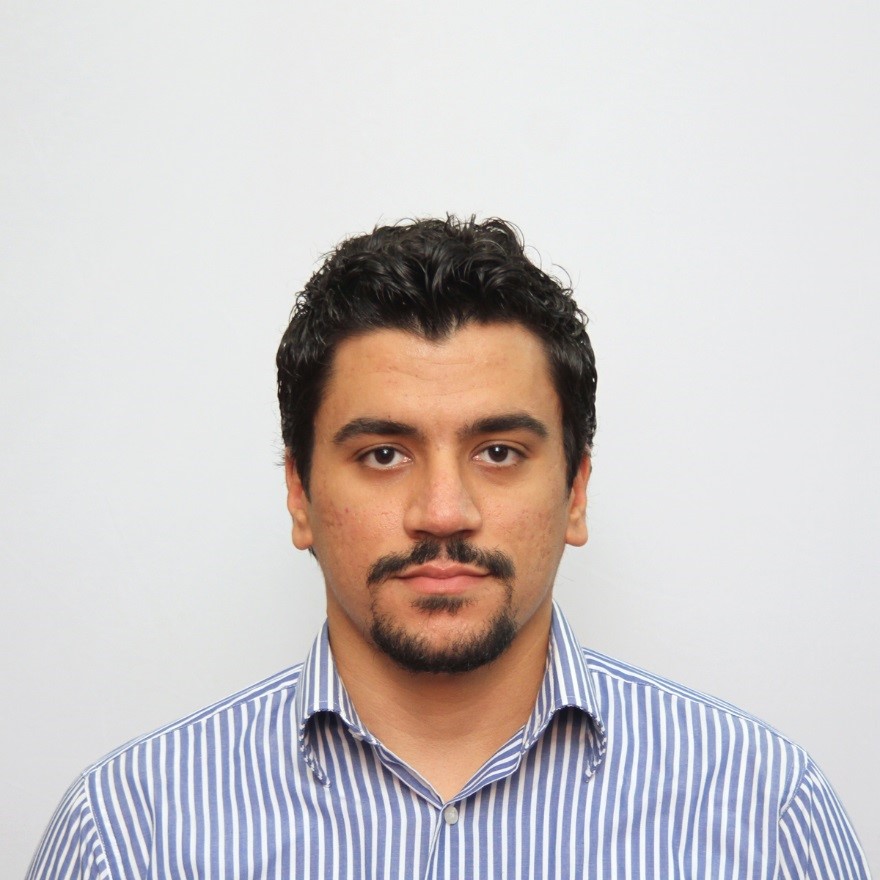
MOHAMMAD TAHA
Bio: Mohammad Taha received his BSc from Modern Sciences and Arts University, Egypt, in 2012 and his MSc from University of Greenwich, UK, in 2014. He is currently pursuing his PhD at Portland State University. His research interests include approximate and probabilistic computing with mem-devices and their applications in object recognition.
Abstract: Although Bayesian inference enhances intelligent probabilistic computing systems, it is computationally expensive and not efficient to implement on traditional von Neumann architectures. We propose a simple and novel way to implement approximate Bayesian inference that relies on the Naive Bayes Nearest Neighbour (NBNN) algorithm using memristors. We also show that incorporating variable prior probabilities helps the inference process and helps in saving ≈300× the power because we can lower the input voltage without having to sacrifice significant performance. We tested our system with the MNIST dataset and showed that it can perform up to ≈2−4% better by including variable priors.

NWIKE ILOEJE
Bio: I am a mechanical engineer with background in thermal sciences and scientific computation. My research develops technology systems that enable efficient and sustainable use of global energy and material resources. I also engage in outreach engineering education programs for college and high school students.
Abstract: A diversified portfolio of carbon capture technologies is essential for the sustainable utilization of global fossil-based resources, but the energy and economic penalties integral to CO2 capture constitute important barriers to widespread adoption. Chemical looping combustion technology, which eliminates explicit CO2 separation costs, can reduce these barriers. However, most chemical looping reactor designs face operational challenges associated with circulating oxygen carrier particles. In this study, we present the rotary chemical looping reactor for power generation, whose thermally integrated matrix of micro-channels eliminates the problems of circulating particles, minimizes irreversibilities associated with heat transfer in the reactor, and establishes multiscale coupling between oxygen carrier kinetics, reactor geometry and plant operating conditions. We implement an optimization framework that exploits this multiscale coupling for simultaneous reactor design and power plant techno-economic optimization.

SARATU TERRENO
Bio: I am an embedded Postdoctoral Scholar within the physical plant at the Pennsylvania State University; studying the delivery of value for owners during the implementation of BIM in Facilities Management. The main thrust of my approach is the application of lean principles towards strategic implementation for holistic lifecycle value.
Abstract: The potential of Building Information Modeling (BIM) to add value to Facilities Management (FM) has long been discussed. Crucial to this is the potential integration of information, which would serve to increase efficiency and productivity on the job and in turn positively impact the primary organization’s mission and goals. Other BIM concepts such as collaboration would also improve on present organizational culture by further inculcating the precept of teamwork and open information sharing. However, research has shown that FM organizations have been lagging in the uptake of BIM, especially in comparison to their project counterparts in design and construction. Challenges such as the lack of demonstrated and recorded examples of successful implementation, and a similar dearth of a structured method for implementation have been vocalized. This study aims to provide real-life examples of the implementation experiences of early adopters. The implementation processes of two tertiary educational institutions were mapped, and data from time motion studies utilized in development of a Value Stream Map for each organization. The study identified areas of waste or non-value-adding activities, including potential value-adding opportunities. A value-focused process model has been developed, and metrics proposed - which would streamline organizational processes and inculcate a strategic implementation. The study takes into consideration the multiple facets of organizational culture and processes, managerial strategy and technological aspects; on both organizational and project levels. The lifecycle approach to a process-focused value-delivery of BIM would serve to foster a more holistic consideration, as potential added value and waste have been shown to increase in magnitude down through the lifecycle of a facility. It is expected that this study will increase knowledge in this area, and serve as a boost to inculcate value-focused strategic implementation of BIM in FM.

CHINAZOR AZUBIKE
Bio: Chinazor Azubike is a PhD student at North Carolina A&T State University in the Energy & Environmental Systems & Economics program. She’s very passionate about research, community service and education. Her bi-cultural background has led her to a number of leadership roles and opportunities. In her spare time, she enjoys traveling, cooking and writing.
Abstract: The purpose of this research is to study North Carolina’s land use, the recent changes in crop production patterns, and the transitions between agricultural, forest, and other land. The overall goal of the project is to develop an economic model of the state's land use. Preliminary analysis of the North Carolina USDA Major Land Uses data shows that between 1997, 2002, and 2007 the total forest land, both grazed and non-grazed, decreased as did the total cropland, especially for pasture. However, grassland area has increased approximately 40% between 2002 and 2007. This study assembles the data for the analysis of these and other land use changes. The understanding of the land use changes will allow the economic analyses of the impacts of the changes in economic conditions (prices) and policies (e.g., bioenergy policy). Currently, such models have been developed for the Midwestern part of the US but no such models exist for the North Carolina or the Southeastern United States. This could help design state policies to potentially create new jobs in resource-based industries. One way to diversify our energy supply and to build economic security is to increase our consumption of domestically-produced renewable energy sources, such as biomass-derived transportation fuels. Biofuels play an important role in this portfolio as near-term substitutes for petroleum-based liquid transportation fuels. With an evolving biofuels market, a much greater percentage of our nation's fuel needs can be met with fuels derived from domestically-produced, renewable biomass resources. Biofuel production can create new domestic business and job opportunities in agriculture, manufacturing, and other key service sectors. Bio-based activities in the current economy are estimated to have directly generated more than $48 billion in revenue and 285,000 jobs. Estimates show that continuing to develop biomass resources could expand direct revenue by a factor of 5 to contribute nearly $259 billion and 1.1 million jobs to the U.S. economy by 2030.

JULIUS DOYLE
Bio: I was born in Portland, Oregon and raised in Inglewood, CA. I received a Bachelor's of Science in Biology with a minor in African-American Studies from Loyola Marymount University in 2012. I continued on to the University of Washington where I completed a Master of Arts and Doctorate of Philosophy in Biocultural Anthropology in 2015 and 2018, respectively. The motivations for my research have always included the desire to merge biologically-informed perspectives with African-American studies; no easy task as there is no implicit overlap between the two fields. My Master's and Dissertation research investigated the health effects of resilience among Black men who experience discrimination and adversity, utilizing hair cortisol, a longitudinal biomarker of stress, as a physiologic metric of somatic stress in relation to survey data. As I join the academic body at Binghamton University, I am working to expand this research into the historically Black district of Harlem, New York, as well as standardize a measure of W.E.B. DuBois' notion of double-consciousness to be measured in relation to everyday livelihood in Black communities.
Abstract: Cortisol, a biomarker of stress, is slowly deposited into growing hair strands on the human head. Meyer and Novak (2014) established a method for hair cortisol extraction and analysis and showed that hair cortisol can serve as an integrated measure of psychophysiological stress activity during the period of hormone incorporation into the hair. Consequently, hair samples of significant length may potentially serve as a reliable marker of stress experienced over a longitudinal span of time. Of particular interest then is the development of a psychosomatic measure of some daily, pervasive, hypothalamic-pituitary-adrenal axis-inducing stressors that may be experienced by a diverse group of people. The hair sample collection methods offered by Meyer and Novak (2014) however, (i.e. cutting as close to the scalp as possible with scissors,) can be a rather barbarous method… (cue the chirping crickets) as it leaves behind an unattractive bald spot, and is therefore likely to repel potential research participants in future studies, especially those with kinky-coiled hair textures. We have developed and standardized a participant-friendly and visually-appealing method for hair sample collection, and applied Meyer and Novak’s cortisol extraction technique. Specimens were obtained from fifteen Black men who are patrons at a long-time running, private-owned barbershop located in a Seattle district that is known to serve a large number of Black men. Future research will extend this collection-extraction methodology to research concerning the potential neuroendocrine-moderative effects of resilience in the face of perceived racial discrimination.
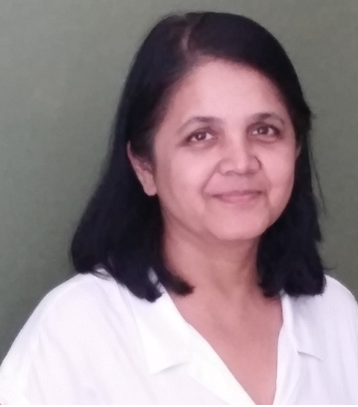
ROHINI ABHYANKAR
Bio: Rohini Abhyankar is a 3rd year PhD student in the Engineering Education Systems and Design PhD program at Arizona State University. She has over ten years of industry and teaching experience each. Rohini’s dissertation focuses on gaining a deeper understanding of adaptation strategies adopted by engineers in engineering workplaces.
Abstract: Women make up 20% of engineering graduates and 12% of working engineers. About half of them leave engineering by mid-career, with 30% citing workplace culture as a reason to leave. To prevent the loss of experienced talent it is imperative to understand women’s approaches to adapting to the engineering workplace culture. Literature shows that when women engineers transition from school to work, the values emphasized by university culture such as academic excellence and cooperation incentives are replaced by new cultural norms that have been shown to favor men while disadvantaging women, including a focus on hands-on technical ability, aggressive self-promotion, and outward confidence. There are also concerns about women engineers’ job satisfaction due to gender imbalance in work environments. In my proposed quantitative study informed by Bandura’s Social Learning Theory and Berry’s acculturation framework, I plan to create a survey instrument that will examine the adaptation strategies used by men and women engineers in engineering workplaces. I will deploy the survey to engineers with 3-7 years of engineering experience via professional organizations. I will investigate differences in the adaptation strategies of men and women engineers and their influence on job satisfaction and turnover intentions using statistical tools such as ANOVA. Engineers who have been able to integrate into their workplace will report high job satisfaction and intentions to persist, while those who feel marginalized will report low job satisfaction and intentions to persist. Findings from this work could lead to targeted university and workplace interventions that may enhance integration and higher job satisfaction, such as incentivizing cooperation and bridging the gaps in hands-on technical ability.
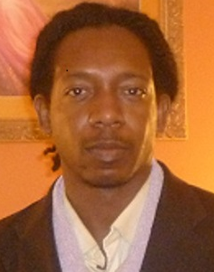
RONALD SMITH
Bio: Ronald Smith is pursuing a PhD in Agricultural and Biological Engineering at Purdue University. His research interests focus on technological and social innovation in agricultural systems. Ronald is currently investigating how interdisciplinary planning, collaboration and stakeholder engagement position-controlled environment agriculture as advancement in the larger agricultural system.
Abstract: Year round demand for fresh produce in the US is met by the modern food distribution system. To meet growing consumer demand, engineered solutions must be replicable and widely applicable. New technologies must efficiently use material resources and space. Controlled environment agriculture (CEA) offers the potential to supplement traditional food production by expanding precision management of plant-growth related factors. Engineering and technological developments in CEA have focused on increasing energy, water, and nutrient use efficiencies and product quality. Many strengths of indoor culture, however, can turn into disadvantages when stakeholder engagement, proper planning, technical expertise, and good management practices are not in place. To date, little work has analyzed the role that public and private stakeholders play in the development of CEA innovation and technology diffusion. The goal of this research was to conceptualize CEA from a multidimensional stakeholder perspective to identify opportunities and challenges that influence technological potential, decision-making, and consumer acceptance. To develop a common engineering focus, a needs assessment that took associated stakeholders into account with respect to inclusive design and management, site suitability, assembly, acceptability, and utilization was required. A framework was developed to characterize CEA stakeholders by utilizing the technological innovation systems (TIS) framework as an analytical lens. Stakeholder mapping involved identifying relevant actors and groups, analyzing perspectives and interests, visually mapping relationships to missions/objectives and other actors, and prioritizing relevant issues. Results showed that CEA was mostly perceived as a commercial activity as opposed to a social one. Opportunities and barriers linked to CEA were categorized as technical, economic, environmental, and social. The common engineering focus surrounding CEA stakeholders included: food production, product enhancement, materials management, reducing resource consumption, and reducing waste. This work will provide critical empirical data to verify claims associated with CEA as well as a foundation for future studies.
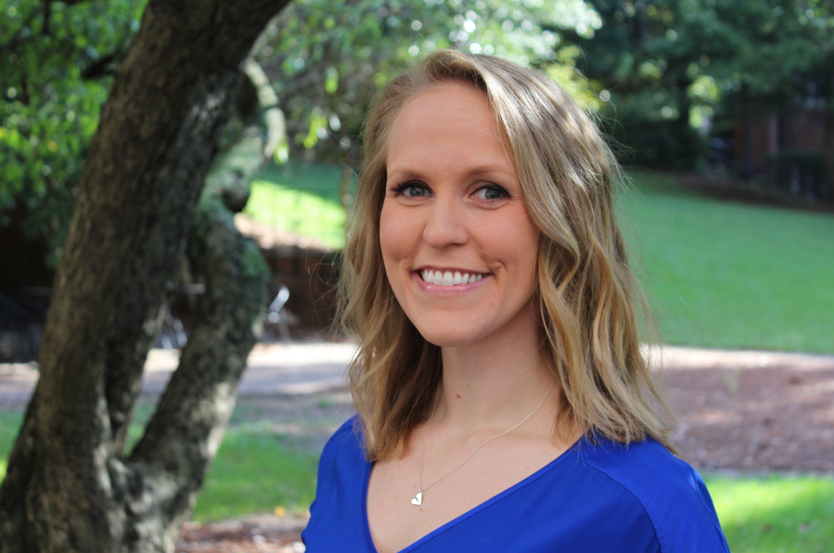
DAISY BOURASSA
Bio: Daisy Bourassa received her Bachelors in Biochemistry from Simmons College in Boston and a PhD in Chemistry from Georgia Tech in Atlanta. While in graduate school she began working part time in Student Affairs at Agnes Scott College and is now the Assistant Director of Residential Education and teaches one chemistry course per semester.
Abstract: Despite the importance of zinc in cell proliferation and development, mechanisms of zinc redistribution during these processes remain largely elusive. Given the limited external supply of nutrients during embryogenesis, developing organs most likely redistribute zinc from neighboring cells to satisfy their increased demand, thus raising the intriguing and fundamental question of how the limited supply of zinc in a fertilized egg is redistributed in the course of embryonic development. To systematically explore this question, we employed both cell culture and zebrafish as model systems in combination with a Zn(II)-selective fluorescent probe and synchrotron X-ray fluorescence (SXRF) microtomography studies. Using the Zn(II)-selective emission ratiometric fluorescent probe designed in our lab, we followed the redistribution dynamics of labile Zn(II) pools in a zebrafish embryo during the first 24 hours post fertilization. Furthermore, SXRF microtomography studies were used to visualize the 3D distribution of total zinc in fixed zebrafish samples. From this method we successfully reconstructed a 3D elemental distribution map at 5 μm resolution. The volumetric map revealed a distinct zinc distribution that could be correlated with characteristic anatomical features at this stage of embryonic development. Together these powerful techniques allow us to study both labile zinc in live samples and total zinc content in fixed samples in order to achieve a more detailed understanding of the zinc redistribution dynamics during embryogenesis.
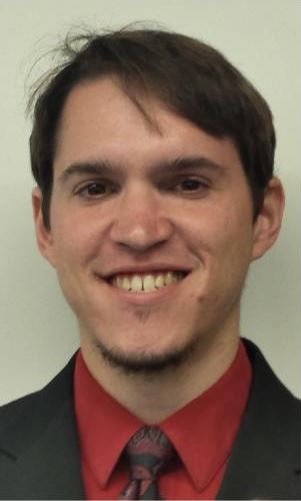
ALVARO CARDOZA
Bio: Alvaro Cardoza is pursuing his PhD in electrical engineering from the University of Pittsburgh with a power concentration. Alvaro's research interests include renewable integration, distribution networks, and power electronics. His dissertation explores using MIMO power electronic interfaces within a distribution network to control electricity flow and improve generation availability.
Abstract: Throughout the 21st century, the electric grid has shifted towards diversified, distributed power generation profiles with more DC-based generation and loads, reinforcing the need for improving the electric grid’s power supply availability. One solution utilizes multiple-input, multiple-output (MIMO) Active Power Distribution Node (APDN) converters to create reconfigurable distribution grids -- providing selective utilization of generation and storage resources. This paper highlights on the design and simulation of an APDN topology, and discusses state-space and equivalent circuit model techniques for averaging MIMO converters and reducing their simulation time.
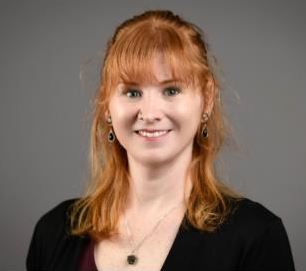
ANDREA HAVERKAMP
Bio: Andrea Haverkamp is a doctoral candidate in the Environmental Engineering program at Oregon State University and member of the editorial board at the International Journal of Engineering. Social Justice, and Peace. She is also a student in the Queer Studies Ph.D. minor within the department of Women, Gender, and Sexuality Studies at Oregon State University. Andrea’s research interests include marginalized experiences in engineering, feminist research methodologies, and interdisciplinary social justice scholarship. Her dissertation research is funded by a recently awarded NSF grant to study the nuanced gender dynamics in engineering education for transgender and gender nonconforming students informed by queer theory and collaborative community methodologies.
Abstract: Engineering remains the most male dominated professional occupation in the United States. Research into professional identity formation define engineering identity and culture as both existing within hegemonic masculinity. Gender in engineering research has traditionally investigated how this influences women and their gender identity & expression. Prior studies indicate that women may experience a lower perception of belonging in engineering and may alter their sense of self or gender presentation to “fit in.” LGBTQ+ individuals in engineering are found to report similar experiences, navigating the field with a rate of “closeting” that is twice the national average and at a rate that is the highest among the STEM disciplines. Unexplored are the experiences of those whose relationship to gender is more nuanced than two binary categories of men and women and an assumed cisgender status. This gap in literature and analysis of a 2016 student climate survey informed the creation of our interdisciplinary project to document the experiences and knowledge of transgender and gender nonconforming (TGNC) engineering undergraduate students. Results from the analysis of our student survey data present climate perceptions which are significantly correlated with gender identity and gender status. Questions relating to sense of belonging, imposter syndrome, and perceptions of identity impact were asked by 32 questions which were averaged into 4 reliable social concept scales. Data interpretation was performed using IBM SPSS to ascertain trends, p values, and effect size represented by point biserial correlation (rpb) and eta. One’s gender as nonbinary or a woman is correlated to a greater awareness of identity, employment of impression management tactics, diminished belonging, and sense of doubt when compared to men. There were similar relationships when comparing cisgender students against transgender students. The data suggest nonbinary and transgender students are navigating an inequitable social climate in engineering education, necessitating further investigation.